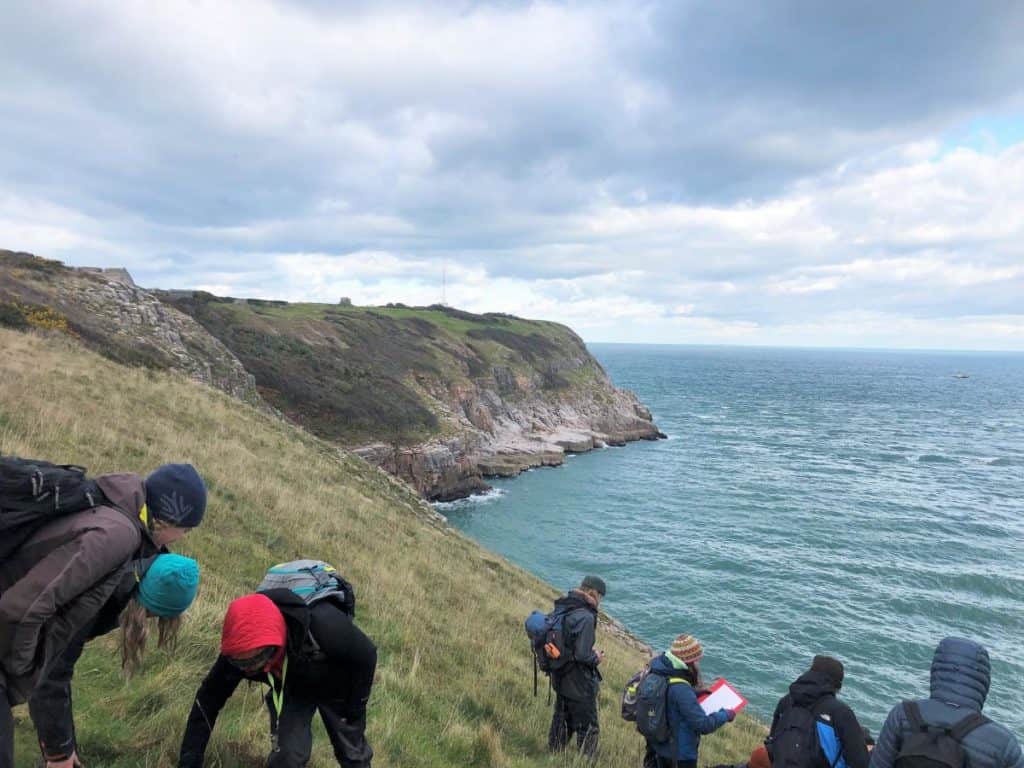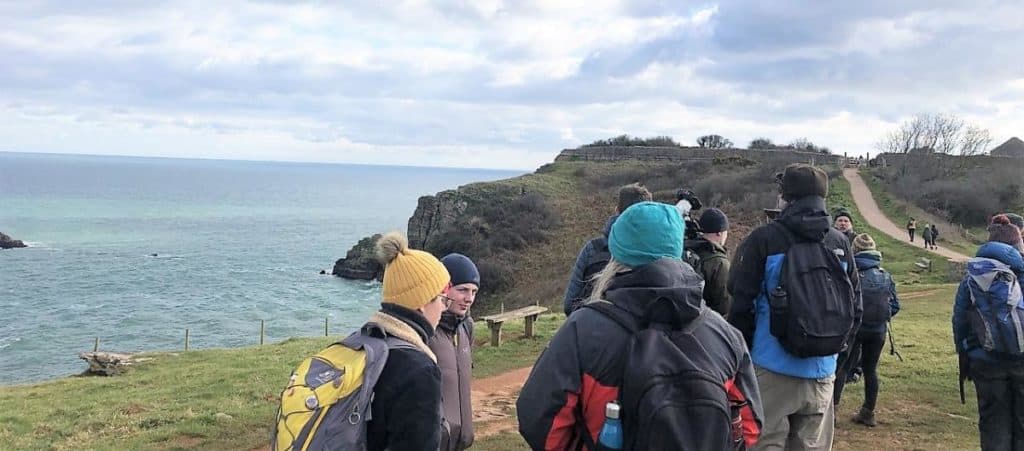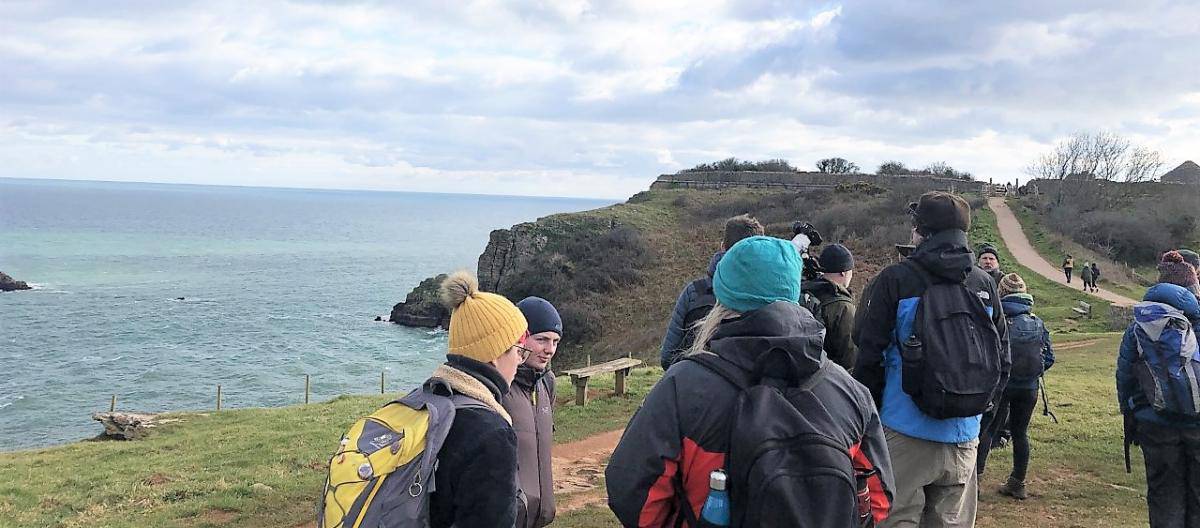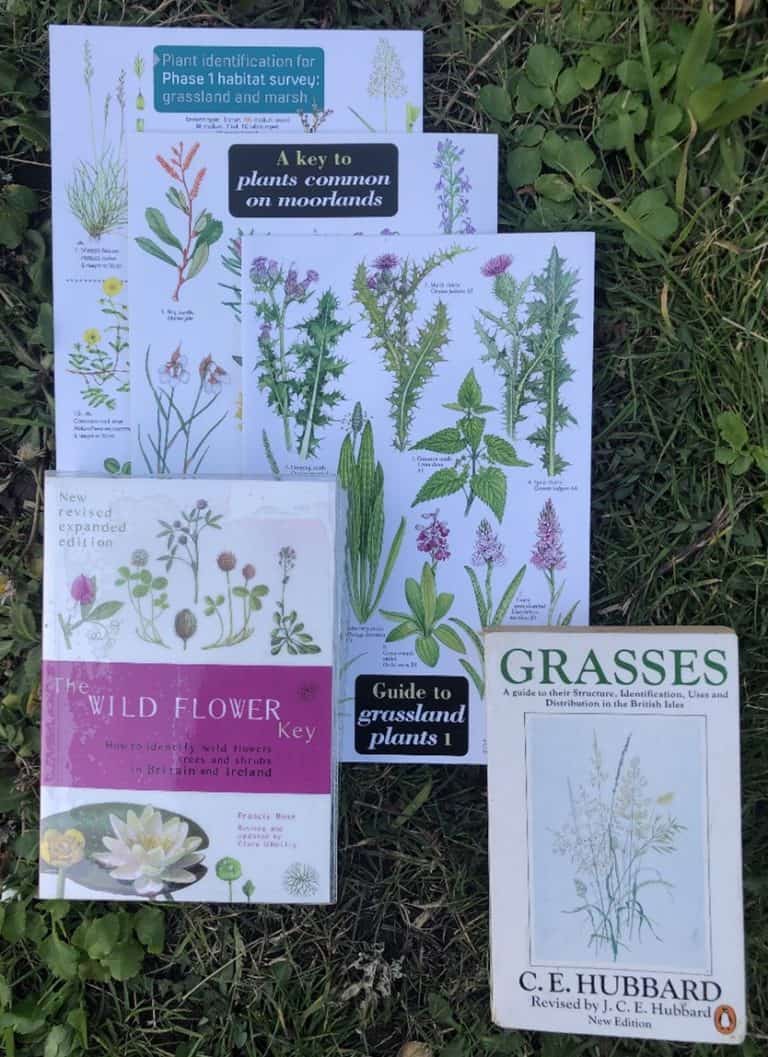A guest blog by Chelsea Boden, a Higher Education Placement Student with the Field Studies Council
It’s always great to hear from our course participants, and we love to share knowledge and experiences with others. One of our fantastic higher education placement students, Chelsea, took part in the NVC Winter Habitat Survey course at Slapton Ley. She is an Environmental Science student who is broadening her wildlife knowledge during her placement and has kindly shared some of her experiences with us. Join Chelsea as she walks us through an NVC Habitat Survey course, covering what the day involved, some of the things she’s learnt and a selection of the recorded species.
What is a NVC Habitat Survey?
The British National Vegetation Classification (NVC) is a system used to classify vegetative habitats in Britain, using specific codes for each classification (e.g. MG1, MG2, MG3 etc., for different mesotrophic grassland communities). The system was developed during a large-scale scientific meeting by ecologists, botanists and other environmental professionals. The outcome was the publication of British Plant Communities, a 5-book compendium of broad-range habitats.
- Volume 1: Woodlands and Scrub
- Volume 2: Mires and Heaths
- Volume 3: Grasslands and Montane Communities
- Volume 4: Aquatic Communities, Swamps and Tall-herb Ferns
- Volume 5: Maritime Communities and Vegetation of Open Habitats
Survey Sites
This course was based around the beautiful Field Studies Centre, Slapton Ley, an ideal location due to its proximity to Dartmoor and Berry Head. Two sites were selected due to their contrasting geology, demonstrating differences in soils, vegetation and associated NVC classification.
Day 1
To begin the course, we met at Slapton Ley Centre to learn about NVC classifications and get some background on the surrounding area. After introductions and welcomes, we set off to Berry Head, a coastal headland forming the southern boundary of Tor Bay. It is a national nature reserve and Site of Special Scientific Interest (SSSI) hosting a range of nationally rare and threatened species; an ideal location to conduct a botanical survey. Here, the underlying geology is limestone – a feature that will impact the species present.
The journey to the field site was a great introduction to the beautiful coast of Devon; somewhere I had not spent much time before. At Berry Head we began looking at the vegetation along the edge of the carpark, then further into the nearby field. It was interesting to see how the variety of plant species may depend on how frequently trodden an area is. Some species closer to the car park were more nutrient-dependent as they would be nourished by nutrient rich items found on the bottom of shoes or left by dogs…
Towards the nearby fields we found more physically fragile species and those less tolerant to foot traffic. This was particularly interesting as it showed the changes in NVC classification that can occur over a short distance. This is why it’s essential to survey several parts of a site before determining a classification for the whole area. For these areas, we used Volume 3 of British Plant Communities: Grasslands and Montane Communities. Using this guide, we determined that the community nearest the car park was a sub-community of the MG1: Arrhenatherum elatius grassland. Further away, we found this changing into MG9: Holcus lanatus-Deschampsia cespitosa grassland. We also found evidence of MG5: Cynosurus cristatus-Centaurea nigra priority habitat grassland community. It was interesting to see all this variation in a relatively small area!

Moving on, we headed towards the southern fort, surveying an area of vegetation on a sea-facing slope above the cliffs. Here, we discussed how the differences in salinity from sea spray and greater exposure to wind affect the vegetative habitat. We discovered that the habitat would be best described as one of those in Volume 5 of British Plant Communities.
Nearer the southern fort, we were introduced to a very unique habitat; so unique that it has its own NVC classification due to the variety of rare plant species. This is the CG1b classification: the Scilla autumnalis-Euphorbia portlandica sub-community of the Festuca ovina-Carlina vulgaris grassland. The rare species present included:
- Autumn squill (Scilla autumnalis)
- Honewort (Trinia glauca)
- White rock rose (Helianthemum apenninum)
- Small restharrow (Ononis reclinata)
Day 2
For the second day, we ventured out to Dartmoor, specifically the area of Sharpitor. Dartmoor is a National Park and Special Area of Conservation (SAC) covering 954 km2. The underlying geology is granite, which is exposed in places forming its famous tors. Sharpitor is located on the south-western side of the National Park. For this day’s survey, we used Volume 2 of British Plant Communities: Mires and Heaths to determine the NVC classifications.
Whilst climbing towards the tor, we stopped to identify common Dartmoor plants, such as heath bedstraw (Galium saxatile) and cow-horn bog-moss (Sphagnum denticulatum). We noticed the difference in the vegetation present on the road-facing side, which was more similar to a calcifugous grassland. Due to the presence of heath bedstraw (Galium saxatile), sweet vernal grass (Anthoxanthum odoratum) and tormentil (Potentilla erecta), we categorised this niche as the U4e: a subcommunity of the Festuca ovina-Agrostis capillaris-Galium saxatile grassland. We surveyed the area around the tor, adding new plants to our identification repertoires.

Continuing down the southeastern side towards the peat bog, we learned about different bog plants including common floatgrass (Glyceria fluitans) and golden-head moss (Breutelia chrysocoma).
In this area, we found M10a; the Carex demissa-Juncus bulbosus/kochii subcommunity of the Pinguiculo-Caricetum dioicae mire. This was interesting as the maps available under this classification showed that this community is not generally found in southern Britain. Its presence here may be due to a gradual change since the books were last edited.
After some lunch, we went up onto the other side of the tor to see what differences in vegetation we could find. Here, we found cross-leaved heath (Erica tetralix), bristle bent (Agrostis curtisii), deergrass (Scirpus cespitosus) and mat-grass (Nardus stricta). Indicating that we were probably looking at an area of the H4d; Scirpus cespitosus subcommunity of the Ulex gallii-Agrostis curtisii heath.
It was great to see such a variety of habitats, undertake an NVC survey and practice my identification skills. We all learned a lot about various plant communities and different habitats! The tutor Philip Wilson was highly knowledgeable, and he really did treat us to a wonderful botanical weekend! It was also great to meet like-minded people on the course and share the experience with others.
Here’s a little snippet of what Chelsea got up to as a placement student:

“While being a Higher Education Placement (HEP) at the Field Studies Council, I’ve had many opportunities to improve my knowledge base on all sorts of areas of the environment, including rocky shore communities, sand dune ecology and salt marsh plant identification. I’ve also been given several training opportunities to further widen my knowledge and experience while on placement; this includes training with the Pembrokeshire Coastal Forum on identifying sea birds, education on grey seals, plus Snorkel Instructor training with BSAC. It’s been great to explore other parts of the country via the Field Studies Council centres, including Millport in North Ayrshire, where I spent part of the winter season, Slapton Ley in Devon, where I attended the NVC Winter Habitat Survey course and here at Dale Fort in Pembrokeshire. These locations have stunning views and surrounding scenery, which helps illustrate the importance of protecting our environment. Working with the Field Studies Council during my placement year so far has really helped to demonstrate the importance of many of the topics I’ve studied at university and put lots of the theory into practice, something I had not had the opportunity to do first-hand during my studies due to Coronavirus halting any practical experience I would have undertaken. I feel confident that this year of experiences will help me continue my degree by giving me that edge that only first-hand experience can provide.”
If you would like to learn more and experience an NVC Habitat Survey first-hand, you can find out about upcoming courses here.
We also have plenty of opportunities to upskill in botany on our practical or online courses.
If you are interested in completing a placement with the Field Studies Council, sign up for our newsletter to get announcements about our future opportunities.
And lastly, if you have been on one of our courses, we would love to hear from you, so remember to tag us on social media and share your photos! @FSCBiodiversity


